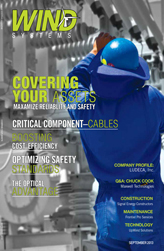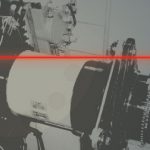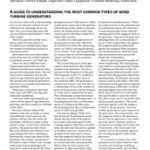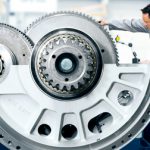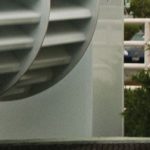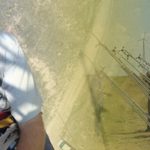Last year was a banner year for wind power by virtually every measure. Globally, 2012 saw the addition of 40 GWof wind energy capacity. The United States alone accounted for nearly one-third of that, with 13.1 GW—a new record. The surge has been largely attributed to uncertainty over extension of the production tax credit and the rush to complete projects by year-end. By the time Congress finally extended the credit in January, new installations had already begun to slow and last year’s boom is not likely to be repeated. While installations in 2013 are expected to remain flat, the outlook is more optimistic for 2014, as projects initiated in the coming year reach the production stage.
Slower market demand is bound to put downward pressure on prices. Given the market’s significant tailwind, wind power original equipment manufacturers will be looking to shrink their total costs across the entire manufacturing value chain, not only to remain competitive, but to accelerate adoption of wind-powered energy generation. Indeed, if wind power is to compete with fossil fuels and grow beyond its current six percent share of the nation’s generating capacity, driving down the cost of bringing wind turbines to market—which is passed on to energy producers and ultimately to consumers—is an industry imperative.
While the total cost of a wind turbine typically represents fifty-five to seventy percent of the total cost of an installed system, the overall cost basis is trending downward and will likely continue to do so over the foreseeable future. A key contributor to lower costs is innovation in the assembly process. Under pressure from project developers and system owners, wind turbine OEMs are achieving lower costs by shifting assembly closer to the demand site in order to minimize the soaring costs of transportation—which by some estimates can add 10 to 15 percent to the cost of a wind farm project. Bringing that number under control requires sophisticated logistics, a tightly knit supply chain and relationships with component manufacturing partners that have the geographical reach to deliver products and provide services where they are needed.
In addition, key technology advancements are playing a major role in reducing the costs of turbine engines. Refinements in design and the use of lighter materials are helping to reduce both manufacturing and operating costs of blades and towers. The trend toward longer blades and taller towers stands to improve overall turbine efficiency and performance, meaning that more energy can be extracted from the wind with fewer turbines needed.
The industry is understandably focused on the costs of more expensive elements of the wind turbine value chain—specifically turbine blades and towers. A less obvious but increasingly compelling opportunity to take cost out of the value chain lies in the design and assembly of the system electronics. Transformer, generator, cabling, and other control systems represent between eight and twelve percent of the total cost of the system—not a huge portion at first glance, but considering the average cost of a commercial scale turbine ranging from three to four million dollars, any incremental savings could add up quickly, especially when scaled over a large installation. That said, value chain cost considerations also apply to smaller turbines for farms ranging from five hundred thousand to one million dollars apiece. Designed properly, a system’s electronics can not only lower the cost basis of a wind turbine system, but also enable developers and turbine original equipment manufacturers to deliver a more efficient product to their customers.
 Suppliers of wind turbine system electronics compete in a fragmented market. Although a healthy percentage of electronic components are outsourced today, the changing regulatory environment, mismatches in supply and demand, and the wavering financial stability of several suppliers has prompted a growing number of original equipment manufacturers to start insourcing as a counter-measure to these market dynamics. Many are finding, however, that building versus buying is an expensive proposition that ties up valuable cash and requires a skill set outside their core competency. And, to make things worse, a lack of diversification makes them less able to adapt to changes in business conditions.
Suppliers of wind turbine system electronics compete in a fragmented market. Although a healthy percentage of electronic components are outsourced today, the changing regulatory environment, mismatches in supply and demand, and the wavering financial stability of several suppliers has prompted a growing number of original equipment manufacturers to start insourcing as a counter-measure to these market dynamics. Many are finding, however, that building versus buying is an expensive proposition that ties up valuable cash and requires a skill set outside their core competency. And, to make things worse, a lack of diversification makes them less able to adapt to changes in business conditions.
Wind turbine system developers and original equipment manufacturers can achieve better utilization of capital resources through methodical project planning. The key is to partner with manufacturers across the wind power ecosystem that do more than build components to spec, but who have the engineering expertise and market knowledge to find ways to reduce costs without compromising performance. To compete in an environment of downward cost pressure, suppliers to OEMs must be able to add value not only through design, but also through improved sourcing, supply chain management, manufacturability, testing, and certification. They must also be able to leverage significant economies of scale in procurement and manufacturing.
Original equipment manufacturers stand to benefit if they look at design and manufacturing as an integrated process. Manufacturing partners who are steeped in wind turbine technology and understand the end product should be able to design components that can be manufactured more efficiently and cost effectively. In the electronics realm, for example, that may mean figuring out how to build a wind pitch system with fewer components, shrink the electronics footprint and reduce weight without sacrificing functionality. A supplier should also be able to provide full design-for-manufacturability, which streamlines the production process, and to perform all testing required for certification before delivering the product to the original equipment manufacturer. This requires having standing relationships with certification bodies and being fully conversant in current certification requirements. Table 1
Improving the efficiency of components and of the manufacturing process are important steps in reducing costs. Equally important is eliminating slack in the supply chain. Suppliers need to be able to demonstrate efficient logistics management at every step from the sourcing of components to the delivery of finished products when and where they are needed. Effective logistics operations today are supported by sophisticated modeling tools and techniques that enable companies to optimize everything from availability of materials to sourcing locations, transit times and distances.
As assembly is moving closer to the demand site, project developers and turbine original equipment manufacturers will be increasingly reliant on manufacturers that have a meaningful presence in the regions where projects are located. This need is likely to be met by companies that have developed a global network comprised of a highly diversified and skilled workforce experienced in assembly processes that can be matched with specific product requirements. Given that the need for wind power tend to be modulated by government incentives, the workforce at the local level needs to be flexible so that it can expand or contract based on fluctuating demand. This requires organizations with access to and knowledge of existing governmental guidelines that preside over the businesses.
As indicated in the accompanying table, supply chain management can influence the costs of turbine components rather significantly. Today’s splintered value chain adds overhead through the duplication of purchasing and planning services. When compounded by a general supply-and-demand imbalance, these inefficiencies produce excess inventory in the pipeline. Supply chain considerations should model the entire value chain with variables that include lead times, minimum order quantities and assembly times. The same logic can be applied on a trickle-down basis to individual suppliers across the value chain.
Materials management in the electronics realm of the wind power value chain is critical given the emphasis that customers place on the reliability requirements of the manufactured product. Original equipment manufacturers need to pay special attention to vendor qualification and component selection. The purchasing leverage of the supply chain partner should also be considered, as it can lower the costs of component procurement. In today’s wind power business, it is essential for an effective supply chain partner to have the tools to model and manage the value chain around the globe and deliver the lowest landed costs.
In the effort to reduce costs across the value chain and spur wider adoption of wind energy, developers and wind turbine original equipment manufacturers must be able to count on their industry partners for creative solutions. An important precondition to any successful manufacturing partnership is the financial viability of the supplier. Developers and original equipment manufacturers need the flexibility to stretch their capital, and downstream partners in the value chain must be able to shoulder some of the financial burden and withstand extended payment terms.
Moreover, they must have the wherewithal to invest in their own infrastructures, including assembly and test equipment, new design tools, and, of course, sufficient project staff resources. Financial stability also means demonstrating the ability to raise capital through debt financing if required.
Wind power has moved far beyond the fringes of imagination. It is proven, viable and increasingly popular with energy producers, municipalities, corporate customers and consumers. However, if it is to make the transformation from an “alternative” to a mainstream energy source—and deliver all the attendant benefits to the environment and to society—it must be not only technically viable, but economically as well. The challenge is not simply to seek out ever-lower bids, but for turbine original equipment manufacturers and their partners across the ecosystem to work closely together to drive innovation that will produce greater efficiencies and drive down costs.



















